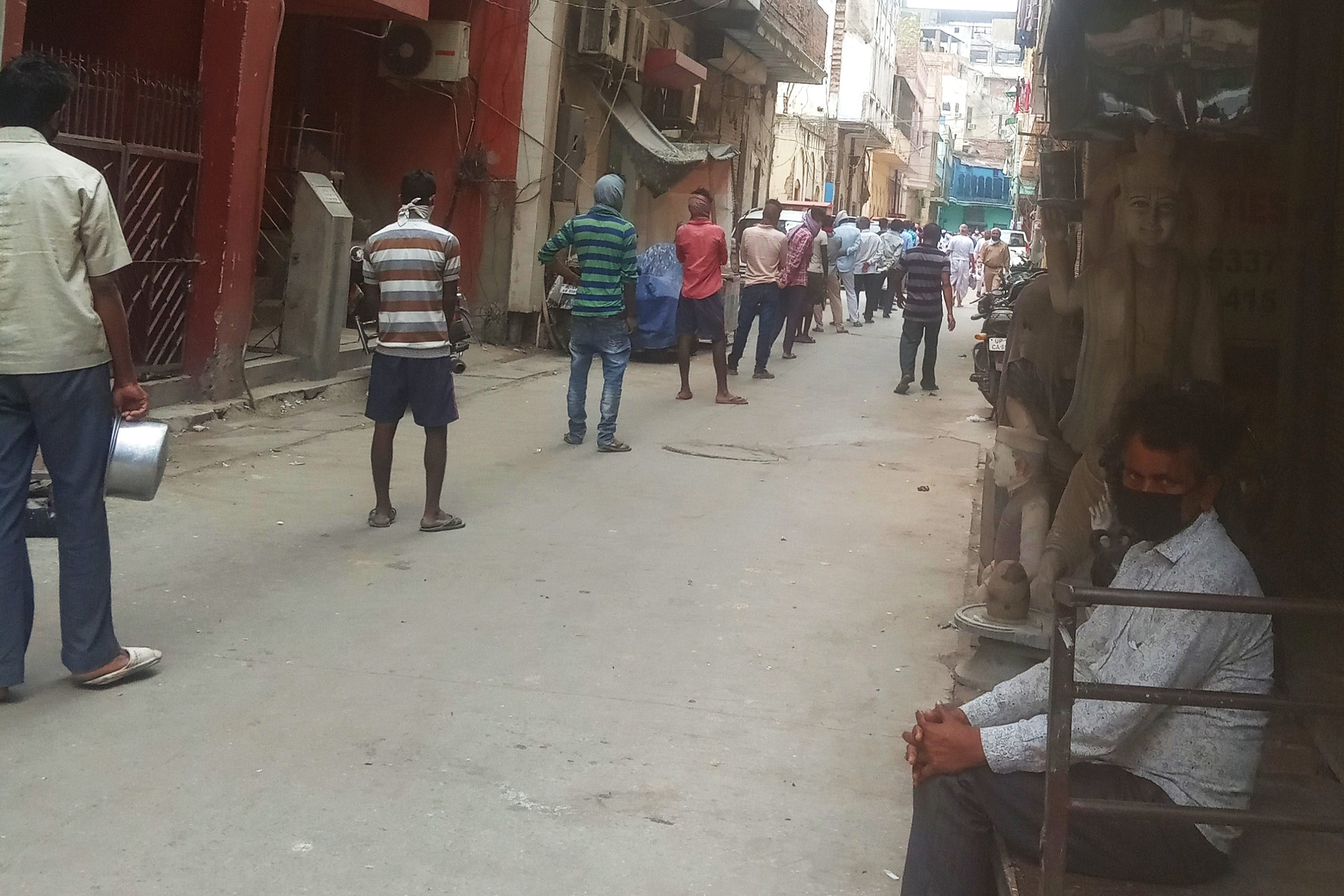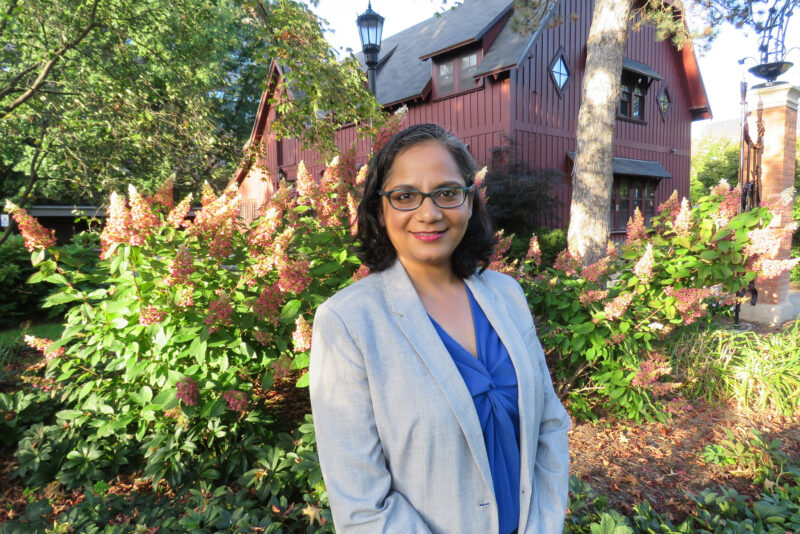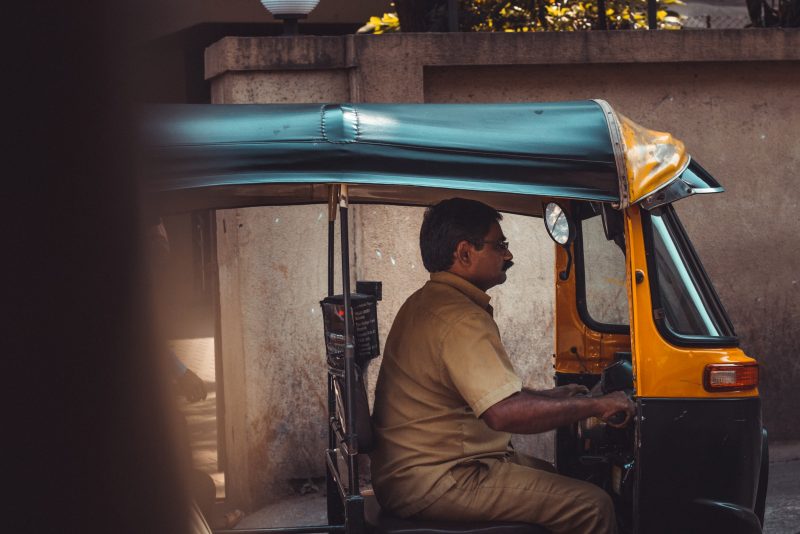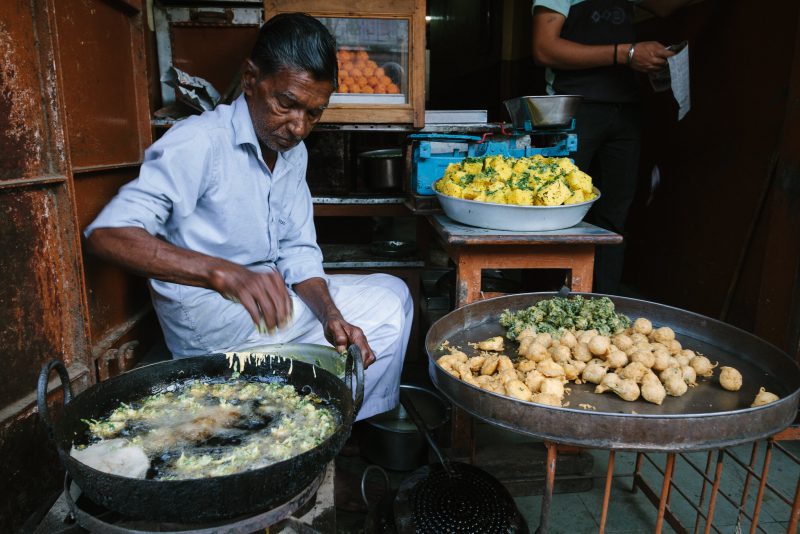Migration Mess: Using a Food Systems Lens to Understand India’s Migrant Crisis after COVID-19

In this blog post, Tata-Cornell Institute (TCI) postdoctoral associate Anaka Aiyar draws lessons about migrants in India from TCI’s book, Transforming Food Systems for a Rising India, and applies them to the migration plight precipitated by the coronavirus pandemic.
Almost as soon as the Indian government instituted a nationwide lockdown to contain community transmission of the novel coronavirus, the news exploded with sound bites, videos, and photos of thousands of migrants beginning their long walks back home. With interstate transportation halted overnight, migrant workers from the major urban centers of New Delhi and Mumbai traveled on foot to as far away as Haryana, Uttar Pradesh, Madhya Pradesh, and even Bihar.
In response, the government set up temporary shelters to provide food and water. Some others provided essential services in migrant housing communities and discussed providing cash incentives. Individuals and civil society rushed to donate food and water where they could. Over the last two weeks, state governments have been digitally registering migrants to determine where they are stranded and estimate demand for travel.
The lack of involvement of experts studying this phenomenon in policymaking has led the government to take ad-hoc and reactionary actions.
These actions, though commendable, revealed that the Indian government was completely blindsided by this phenomenon. The lack of involvement of experts studying this phenomenon in policymaking has led the government to take ad-hoc and reactionary actions. Migrants complain that lofty goals for protecting them have not translated into ground-level actions. Hence many migrants continue to try and walk back home this putting their lives (and their families) in danger.
The COVID-19 pandemic migrant crisis underscores some lessons about the importance of non-farm livelihoods discussed in our book, Transforming Food Systems for a Rising India. Now that this phenomenon has caught the attention of the public, citizen interest should be galvanized to introduce proactive measures for this previously invisible labor force.
Lesson 1: Migrant laborers derive economic livelihoods from urban and peri-urban areas but maintain homes across rural India due to the high costs of migration.
In chapter 3 of Transforming Food Systems for a Rising India, we collate evidence that seasonal or temporary migration, when people spend less than six months a year away from their home, is a main feature of Indian migration. High costs of living, poor health and sanitation infrastructure, and expensive urban real estate make permanent migration prohibitively expensive. However, the low profitability of agriculture in impoverished parts of the country drives the need to supplement incomes by working in urban and peri-urban areas. If urban labor market demand falls, such as during the COVID-19 lockdown, or agricultural labor demands increases, such as during harvesting season, migrants will make their way back home.
Lesson 2: Migrants travel across the country to participate in economic opportunities based on their skill level and access to networks.
In chapter 2, we show that most migration involves people moving from one rural area to another. Agricultural laborers from impoverished states migrate to richer states in response to wages.
Less frequently, migrant workers move from rural areas to urban areas. Rural-to-urban migration is catalyzed by the labor demand pull of the manufacturing and services sectors. Participation in the construction, manufacturing, and petty trade industries brings low-skilled workers from around the country. Other service sectors, such as retail and travel services, hire a more educated workforce.
Where migrants travel for work depends not only on their skills and demand for labor, but also their social networks in the industry. Access to cities is moderated by physical infrastructure, such frequency of connections on roads and rail networks. Because of this, many big cities like New Delhi and Mumbai attract many interstate migrants.
Lesson 3: The economic situation of migrant laborers is precarious because they are not protected against economic shocks.
The same economic forces that drive prosperity also cause income losses. Unlike developed countries, there are no safety nets that protect employees against job loss in India. Additionally, there are no employment exchanges or programs that allow workers to learn new skills based on productivity shocks.
The COVID-19 shock was unique. The fear of community transmission led the government to shut down many industries and businesses overnight. While many manufacturers provided laborers with advances on their incomes when they were let go, uncertainty on the timelines for the reopening of industries has increased economic insecurity.

A migrant laborer holds a relief package of food. (Photo by Vinayak Mali 90/CC by SA)
Lesson 4: Most migrant laborers do not have a financial buffer for economic or health shocks.
Our book also shows that the migrant situation is tenuous with regard to food security. Many migrant laborers cannot access rations since Public Distribution System (PDS) benefits are not transferable across states.
The health of migrants is also precarious. Multiple migrants often live together in small spaces to keep the costs of urban housing down. Large families are known to share small urban spaces. This is a dangerous situation, especially when human-to-human transmission rates of the novel coronavirus are high.
Migrants also send a large portion of their savings back home to support their families. Nearly 80% of rural incomes come from remittances. This leaves migrants without a buffer for health emergencies.
Learning from a Food Systems Approach: Protecting the Interests of Migrants through Proactive Methods
As the government works on resettling migrants and providing for their food and economic security, proactive measures for increasing the future security of migrants need to be implemented as well:
- The private sector should be allowed to participate in coordinating migrant transportation home. To do so, classifying the transport sector as an essential good during future pandemics is required.
- The government should set up unemployment insurance programs. This will provide financial resources to support migrant laborers in the event of layoffs due to unforeseen health shocks.
- States should work on increasing the transferability of PDS benefits across states and locations. Using technology to register purchases and data analytics to identify whether consumers have withdrawn their benefits can prevent exploitation of the PDS.
- Health insurance is an important tool to protect the health of workers. However, during such times as a pandemic, investments in public health services are most cost-effective in protecting health.
- Urbanization of the country will reinforce threats for future pandemics. Investing in urban infrastructure, including low-cost housing, sanitation, schools, and health, will reduce migrants’ insecurity in the long term.
Thinking Ahead
State governments are documenting migrant laborers in a bid to help them get home. The central government would do well to release this data, as well as census data on migration, to researchers. This can facilitate a more nuanced understanding of the major socioeconomic features of migrant groups that impact their food, income, and health security. Piecemeal and reactionary efforts can at best alleviate concerns in the short term. Long-term, proactive measures should focus on how to empower poor migrants to safeguard their livelihoods against such shocks.
Anaka Aiyar is a postdoctoral associate at the Tata-Cornell Institute and co-author of the book Transforming Food Systems for a Rising India. On twitter @AiyarAnaka.




